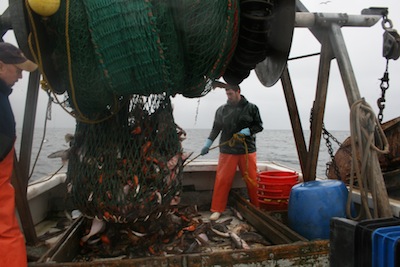The range of responses to the passage of the Magnuson-Stevens Act reauthorization in the House of Representatives on July 11 shows the diversity and breadth of this industry.
The biggest hold-up on coast-to-coast support for H.R. 200 was the inclusion of a recreational grab at snapper-grouper management in the Gulf of Mexico, which gets a leg up in the House version of the bill (a Senate version is TBD). In the end, most major South Atlantic and Gulf of Mexico associations offered their support of the bill with an exception for this portion as well as the attempt to eliminate annual catch limits in recreational fisheries (see Mail Buoy on page 6).
The controversial flexibility clause has perhaps been the most talked about component of this reauthorization. The Fishing Communities Coalition — a group of small-boat fishery associations connected also by their relationships with NGO funding and catch share management — came out strongly opposed to the reauthorization largely because of the flexibility component and the hurdles the bill puts in the way of new catch share programs. These changes, they say, will erode the nation’s deep roots in science-based sustainable fishery management.
However, several provisions in the act aim to include more data points in fishery management, including cooperative data, stock assessment plans for all federally managed stocks and transparency in the council management process.
Flexibility is part of a long-needed recognition that not all fisheries bounce back based on an arbitrary deadline of 10 years. It also goes hand in hand with expanding our vocabulary to include the term “depleted,” rather than using the blanket term “overfished.” Neither of these standards was scientific.
Moreover, the new rebuilding guidelines would encourage the councils to take into account the economic as well as ecological components of rebuilding that affect fishing communities of all sizes, as mandated by the act’s National Standards.
“The use of economic harm to extend rebuilding time frames could extend rebuilding beyond an acceptable point,” said the coalition in a press release.
But how do we define what is acceptable? A total shutdown may bring a stock back within a few years. But if it does so at the cost of local infrastructure and results in a wave of consolidation, is it the best choice?
I can agree with the skeptics that we have managed federal fisheries with a 10-year rebuilding time line to great success. This standard has been perfectly acceptable for many fisheries in recovery. However, it has also been severely detrimental to the groundfish fisheries on the East and West coasts. This amendment is necessary for those fisheries on the fringe.
If we can’t make exceptions for those fleets and their communities, then we can hardly brag about our great successes in management. This is the pendulum swinging. If this reauthorization doesn’t work as expected, then we can adjust it as necessary. That is the beauty of our democratic process — it allows us to grow, change and revise our laws to reflect changes in technology, culture and knowledge.
One reauthorization cannot be all things to all stakeholders. The nature of a federal bill involves give and take. For the sake of fishing communities that have been straining to stay afloat under the 10-year rebuilding guideline, let’s give this a shot. Give them a break and keep fighting for sustainability across the board. We won’t get there without better data, of course. But we also won’t get there by sticking to our guns when we know they’re prone to misfire.






.png.small.400x400.png)
